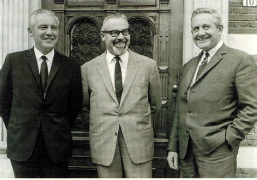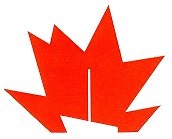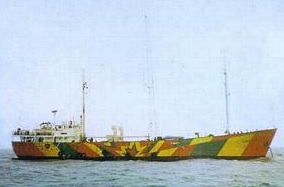© 2014-

PRE-
On 22nd November 1969 the first photographs of the Mebo II in Slikkerveer, Rotterdam appeared in a Dutch newspaper. together with information about the name of the planned new offshore station -
Another article a couple of weeks later said that the radio ship would be anchored off the Dutch coast, at Scheveningen and that programmes would be broadcast in German, Dutch and English. A team of English, Dutch, German and Austrian DJs were reported to have been recruited.
A Continental Electronics 105Kw transmitter (the most powerful transmitter ever on an offshore radio station) was installed on the Mebo II, together with an FM transmitter and two 10-
However, rising costs of equipping the radio ship to such a high standard (on top of the costs already incurred in the aborted conversion of the Mebo I ) began to cause financial problems for Meister and Bollier.
As a consequence they sought partners for the new offshore project and discus sions took place with the Verwej brothers (owners of Radio Veronica). Meister and Bollier had previous business dealings with the Verweijs when they supplied the 10Kw Continental Electronics transmitter installed on the second Radio Veronica ship Norderney in 1965.
sions took place with the Verwej brothers (owners of Radio Veronica). Meister and Bollier had previous business dealings with the Verweijs when they supplied the 10Kw Continental Electronics transmitter installed on the second Radio Veronica ship Norderney in 1965.
However, the Verweijs refused to participate in the RNI project, but instead made an alternative proposal, to which Meister and Bollier agreed. For a loan of 1 million Dutch guilders MEBO Telecommunications would give an assurance that the new offshore station would not broadcast programmes in the Dutch language, thus ensuring Radio Veronica would maintain its monopoly status in The Netherlands radio market. Another condition was that the Mebo II should anchor far away from the Radio Veronica ship Norderney.
In return for all this the Mebo II was pledged as surety for the loan -
On 11th November 1969, MEBO Telecommunications issued a press release naming the planned DJ team for the German and English Services :-
GERMAN SERVICE -
ENGLISH SERVICE -
In addition Urs Emmenenger was named as Technical Director and Eva Pfister as Secretary of the company.
On 26th November 1969 Meister and Bollier held another press conference in Zurich at which they announced programmes would start by Christmas, with a full commercial service being launched in the New Year. They also hinted that if their plans to launch a new offshore station were thwarted by the Dutch government introducing legislation, they would consider using their new radio ship to provide a service to the African state of Sierra Leone.
It was also announced that the station’s ship would not have a fixed anchorage because of the high mast (at 52m it was, at that time, the highest on any offshore station, only exceeded in 1983 by Radio Caroline’s Ross Revenge ), but it would instead sail up and down the coast. Then, in a veiled reference to the financial agreement with the Verweij brothers (of Radio Veronica) they explicitly mentioned that no Dutch language programmes were now planned to be broadcast.
On 27th November 1969 newspapers reported that the management of Radio Veronica was not shocked by the imminent arrival of RNI (despite the secret financial agreement already concluded between the two stations). Veronica Managing Director, Bull Verweij was quoted as saying: "We have a free sea and Radio Veronica does not have the exclusive right on that sea. "
At the Nova Hotel disco in Zurich, the German Service DJs, Horst Reiner, Axel, "Hannibal" and Elkie Bollier, as well as English Service Programme Director, Roger Day had started to produce and record some test transmission programmes.
Meanwhile, press reports started to appear about the business activities of Meister and Bollier indicating that they traded with controversial Eastern bloc states, Syria, the GDR (the then East Germany) and the breakaway province of Biafra (Nigeria).
A number of speculative press stories about the new offshore station also started to appear, including a claim that the Mebo I was originally intended to house a radio station for Biafra, but due to the high start-
On 6th January, 1970, MEBO Telecommunications announced in a press release that it would take about two more weeks before their new station could be launched.
Meanwhile in an attempt to thwart the launch of RNI the Dutch government called on Panama to withdraw the registration of the new radio ship. In response to this request representatives of the Panamanian Ambassador together with Dutch customs officers, (assisted by the PTT and police) arrived on board for an inspection and, finding that no crystals were installed in the transmitters, decided that the ship was not a floating radio station, and therefore the registration could remain (notwithstanding the tall radio masts and the inscription "Radio Nordsee International" painted on the side of the ship !).
Do you have any other memorabilia about RNI which we could add to this Special Exhibition?
If you do, and you are willing to allow the Museum to use it, please contact
We look forward to hearing from you


The psychedelically painted radio ship, Mebo II home to Radio Nordsee International/Radio North Sea International -
The Verweij brothers, owners of Radio Veronica

EXHIBITION INDEX
Pre-



Ground
Back to





Back to
Index


